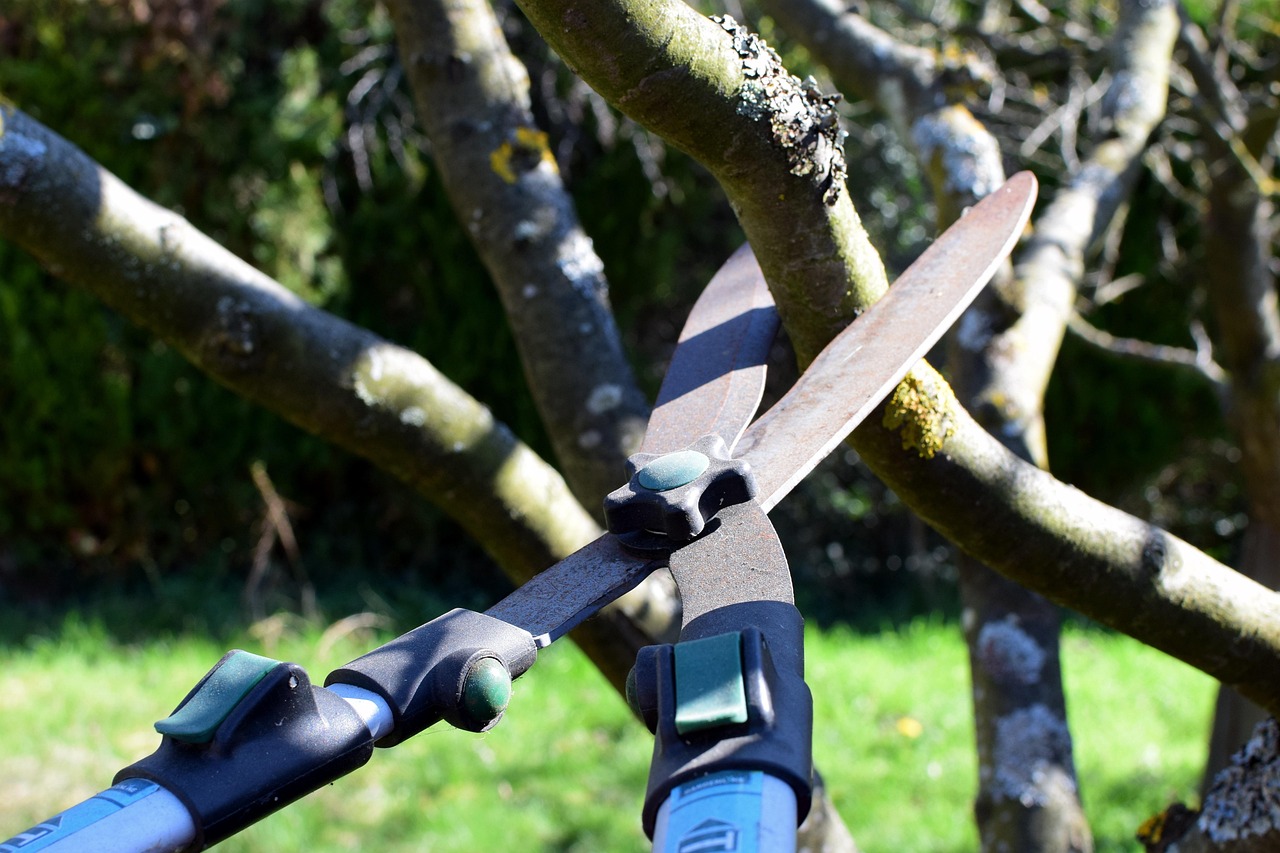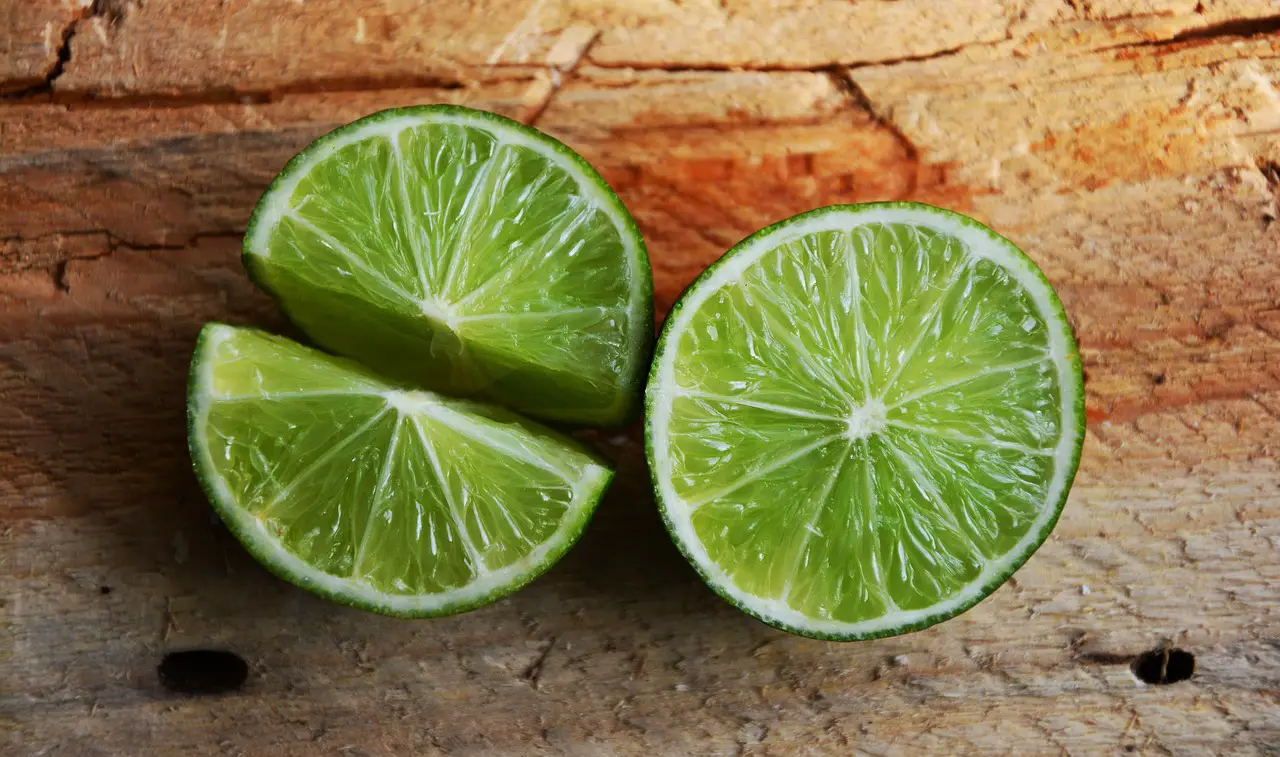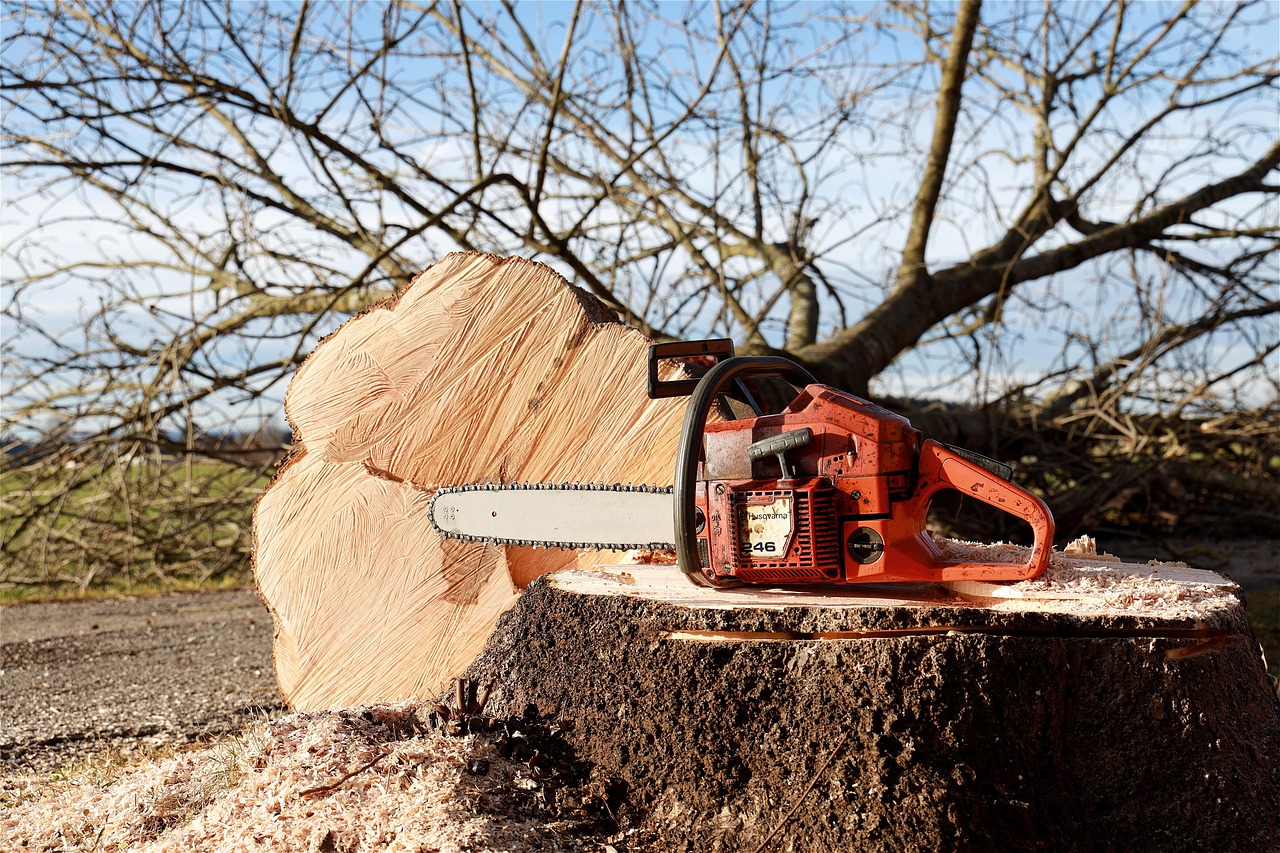Indoor citrus tree pruning is essential for maintaining healthy growth and compact size in small living spaces. Regular pruning encourages bushier growth, improves air circulation, and enhances fruit production. Proper techniques can optimize the health and aesthetics of your indoor citrus trees.
Growing citrus trees indoors has gained popularity in recent years. Many people enjoy the idea of having fresh lemons, limes, or oranges readily available at home. However, limited space can pose challenges. To ensure that your citrus trees thrive in confined areas, proper pruning practices are crucial.

Pruning not only helps to control the size of the tree but also promotes better light penetration and air circulation. This is particularly important in indoor environments where light levels may be lower than outdoors. Additionally, pruning can help prevent diseases by removing dead or unhealthy branches.
Understanding Citrus Trees
Citrus trees belong to the Rutaceae family and include a variety of species such as lemons, limes, oranges, and grapefruits. They are known for their fragrant flowers and vibrant fruits. Indoor varieties are typically smaller and more suited to pot culture compared to their outdoor counterparts. This makes them ideal for compact living spaces.
Here are some popular indoor citrus tree varieties:

- Improved Meyer Lemon
- Calamondin Orange
- Limequat
- Key Lime
- Mandarin Orange
Each type has unique characteristics, but they all require similar care, including appropriate watering, lighting, and pruning techniques.
The Importance of Pruning
Pruning is a fundamental aspect of citrus tree care. It involves cutting away dead or overgrown branches to promote healthy growth. Here are some key benefits of pruning your indoor citrus trees:
| Benefit | Description |
|---|---|
| Encourages Growth | Pruning stimulates new growth by removing older branches. |
| Improves Air Circulation | Removing excess foliage helps air flow through the tree. |
| Enhances Light Penetration | Allows more sunlight to reach the inner leaves and fruit. |
| Increases Fruit Production | A well-pruned tree produces more fruit and better quality fruit. |
| Makes Maintenance Easier | A manageable size simplifies watering and pest control. |
Understanding these benefits is essential for any indoor gardener looking to maximize the potential of their citrus trees. Regular pruning can significantly impact the overall health and productivity of your plants.

When to Prune Your Citrus Trees
The timing of pruning is just as important as the act itself. Ideally, you should prune your indoor citrus trees during their dormant season, which typically occurs in late winter or early spring before new growth begins. This timing minimizes stress on the plants and allows them to recover quickly.
However, light pruning can also be done throughout the growing season to maintain shape and remove any dead or diseased branches. Always observe your tree for signs that might indicate it needs pruning, such as excessive growth or poor air circulation.
Pruning Techniques for Indoor Citrus Trees
Effective pruning requires specific techniques that can vary based on the tree’s growth habits and structure. Here are some fundamental techniques to consider:

- Thinning: Remove entire branches to reduce density and improve light access.
- Heading Back: Cut back branches to encourage bushier growth and a more compact form.
- Cleansing: Remove dead or diseased wood to promote overall tree health.
- Suckering: Eliminate suckers that grow from the base of the trunk to maintain energy focus on productive stems.
When pruning, always use clean, sharp tools to make precise cuts. This practice helps prevent injury to your tree and minimizes the risk of disease transmission.
Being attentive to your indoor citrus trees will yield rewarding results. Pruning not only contributes to their aesthetic appeal but also ensures they remain healthy and productive in your living space.
Tools Needed for Pruning
Having the right tools is essential for effective pruning of indoor citrus trees. Using appropriate equipment can make the process easier and ensure clean cuts, which promotes healing. Below is a list of tools that every indoor gardener should consider:
- Pruning Shears: These are essential for making precise cuts on small branches and stems. Bypass pruners are preferred for their clean cuts.
- Loppers: For branches that are thicker than what pruning shears can handle, loppers provide more leverage and cutting power.
- Saw: A small pruning saw may be necessary for larger branches or when significant thinning is needed.
- Gloves: Protect your hands from thorns or sharp edges while handling plants and tools.
- Disinfectant: Cleaning your tools with a disinfectant solution before pruning helps prevent the spread of diseases.
Investing in quality tools can make a significant difference in the ease of maintenance and overall health of your citrus trees. Always keep your tools sharp and in good condition to achieve the best results.
Basic Pruning Techniques Explained
Understanding the different pruning techniques can enhance the effectiveness of your efforts. Each technique serves a specific purpose in promoting health, shape, and fruit production. Here are some commonly used methods:
Thinning
This technique involves removing entire branches from the tree. Thinning opens up the canopy, allowing better light penetration and air circulation. It is particularly useful in preventing overcrowding, which can lead to disease.
Heading Back
Heading back is the practice of cutting back a branch to an outward-facing bud. This encourages new growth in a desired direction and helps maintain a compact shape. It is especially beneficial for indoor citrus trees that need to stay manageable in size.
Cleansing
Cleansing involves the removal of dead, damaged, or diseased wood. This is crucial for maintaining the overall health of the tree. Regular cleansing helps prevent pest infestations and diseases from spreading.
Suckering
Suckers are shoots that grow from the base of the trunk or roots. Removing these suckers is important as they divert energy away from fruit production. By eliminating suckers, you allow the tree to focus its energy on producing fruit and healthy foliage.
Pruning Techniques by Season
While the dormant season is ideal for major pruning, other times of the year also allow for specific techniques. Adapting your approach based on the season can yield better results:
| Season | Recommended Techniques |
|---|---|
| Spring | Main pruning should be done now to shape the tree before new growth starts. |
| Summer | Light heading back and suckering can be performed to maintain size and shape. |
| Fall | Minor cleansing to remove any damaged leaves or branches before winter. |
| Winter | Minimal pruning, focusing on dead or diseased wood only. |
Signs Your Citrus Tree Needs Pruning
Being able to recognize when your citrus tree needs pruning can help prevent bigger issues down the line. Here are some signs to look out for:
- Overcrowded Foliage: If branches are crossing or densely packed, it’s time to thin out.
- Dead or Damaged Branches: Any branches that appear brown or brittle should be removed.
- Pest Infestations: If you notice pests like aphids or spider mites, they often thrive in dense foliage, indicating a need for pruning.
- Weak Growth: If new growth seems sparse or unhealthy, thinning may be required to encourage better development.
Regular observation of your indoor citrus trees will help you notice these signs early, allowing you to take action before problems escalate.
Post-Pruning Care
After pruning, it is essential to provide your citrus trees with proper care to support recovery and growth. Here are some steps to consider:
- Watering: Ensure that your trees receive adequate water after pruning. This supports healing and new growth.
- Nutrients: Consider using a balanced fertilizer to encourage healthy growth during the growing season.
- Pest Monitoring: Keep an eye out for any signs of pests or diseases after pruning, as stress can make plants more susceptible.
- Humidity Levels: Indoor environments can be dry; maintaining humidity around your citrus trees can promote health.
Tending to your indoor citrus trees after pruning will help them bounce back strong and healthy, setting the stage for fruitful growth in the coming seasons.
Common Mistakes in Pruning Citrus Trees
While pruning is beneficial, there are common mistakes that gardeners often make. Being aware of these pitfalls can help ensure that your indoor citrus trees remain healthy and productive.
- Over-Pruning: Removing too much foliage can stress the tree. Always prune conservatively to avoid shock.
- Ignoring Shape: Failing to maintain a balanced shape can lead to uneven growth. Regularly assess the tree’s structure while pruning.
- Wrong Timing: Pruning at the wrong time of year can hinder growth. Stick to pruning during the dormant season when necessary.
- Neglecting Tools: Using dull or dirty tools can damage the tree and spread disease. Always ensure tools are sharp and sanitized.
- Neglecting Observation: Not monitoring the tree for signs of stress or disease post-pruning can lead to bigger issues. Regularly check the tree’s health.
Avoiding these mistakes will help you maintain your indoor citrus trees in optimal condition, contributing to their overall success.
Pruning for Aesthetic Appeal
In addition to promoting health, pruning can enhance the visual appearance of your indoor citrus trees. A well-shaped tree can be a beautiful addition to your living space. Here are some tips for achieving an aesthetically pleasing shape:
Creating a Balanced Canopy
A balanced canopy allows for even light distribution and a pleasing silhouette. Focus on:
- Removing Lower Branches: This encourages upward growth and creates a more elegant shape.
- Maintaining Height: Regularly trim back overly tall branches to keep the tree at a manageable height.
- Encouraging Width: Heading back outer branches can promote a broader, bushier appearance.
Using Training Techniques
Training your citrus trees involves guiding their growth through strategic pruning. Consider these methods:
- Crown Lifting: Remove lower branches to increase visibility and light access to upper foliage.
- Espalier: Train the tree against a wall or trellis for a unique, space-saving aesthetic.
- Pinching: Regularly pinch back new growth to encourage denser foliage and a fuller appearance.
Understanding Citrus Tree Varieties
Different citrus varieties may require slightly different pruning techniques due to their unique growth habits. Understanding these differences can enhance your pruning strategy. Here are some popular indoor citrus varieties and their characteristics:
<td=Balanced, rounded
| Citrus Variety | Growth Habit | Pruning Notes |
|---|---|---|
| Meyer Lemon | Bushy, compact | Requires regular heading back for shape |
| Calamondin Orange | Tall, upright | Focus on thinning to prevent overcrowding |
| Limequat | Dense and compact | Cleansing is essential for healthy growth |
| Key Lime | Bushy with drooping branches | Suckering removal is important for fruit production |
| Mandarin Orange | Mild thinning promotes air circulation and fruit quality |
Knowing how different varieties grow will help you tailor your pruning techniques for optimal results.
Pest and Disease Management During Pruning
Pest and disease control is critical during the pruning process. Proper care will help prevent infestations and promote recovery. Here are some strategies:
- Inspect Before Pruning: Always check for signs of pests or diseases before you start. Early detection is key.
- Sanitize Tools: Use a disinfectant on your tools before and after use to minimize disease transfer between plants.
- Cull Infected Material: Immediately remove and dispose of any diseased branches to prevent spread.
- Treat Infestations: If pests are present, consider organic pest control methods before pruning.
- Monitor After Care: Keep an eye on your trees for any signs of stress or disease following pruning.
A proactive approach to pest and disease management will support the health of your indoor citrus trees, ensuring they thrive in your compact living space.
The Role of Light in Pruning Decisions
The amount of light that your indoor citrus trees receive greatly influences their growth patterns. Understanding how light affects your trees can inform your pruning practices. Here are some considerations:
- Location Matters: Place trees in bright, indirect light to promote healthy growth. Adjust pruning techniques based on light levels.
- Aim for Open Canopy: Ensure your tree has an open structure to maximize light exposure to all leaves.
- Seasonal Adjustments: Be mindful that light levels change with the seasons; adjust pruning accordingly for optimal growth.
A thoughtful approach to light exposure will complement your pruning efforts, leading to healthier, more productive citrus trees in your home.
Environmental Factors Affecting Indoor Citrus Trees
In addition to light, several other environmental factors play a role in the health and productivity of indoor citrus trees. Understanding these elements can further guide your pruning and care practices:
- Humidity: Citrus trees thrive in humid environments. If the air in your home is too dry, consider using a humidity tray or a humidifier to maintain adequate moisture levels.
- Temperature: Maintaining a stable temperature between 65°F and 75°F is ideal for citrus growth. Avoid placing trees near drafts or heat sources, as fluctuations can stress the plants.
- Soil Quality: Use well-draining potting soil to prevent root rot. Regularly check the soil to ensure it remains moist but not waterlogged.
- Fertilization: Nutrient availability affects growth. Use a balanced fertilizer during the growing season to provide essential nutrients that support healthy foliage and fruit production.
By keeping these environmental factors in check, you can create the best possible conditions for your indoor citrus trees, enhancing their response to pruning and overall care.
Seasonal Care Beyond Pruning
While pruning is vital, seasonal care routines extend beyond cutting back branches. Here are some additional practices to incorporate into your seasonal care:
Spring Care
Spring is a time of renewal for your indoor citrus trees. In addition to pruning:
- Repotting: If your tree has outgrown its pot, consider repotting it into a larger container with fresh soil.
- Fertilizing: Begin a regular fertilization schedule to support new growth.
- Pest Inspection: Check for pests that may have emerged during the warmer weather.
Summer Care
Summer brings its own challenges. You may want to:
- Water More Frequently: As temperatures rise, ensure your trees receive adequate hydration.
- Monitor for Sunburn: If leaves appear scorched, consider moving the tree to a location with filtered light.
- Regular Pruning: Continue light pruning to maintain shape and remove any suckers.
Fall Care
As temperatures cool, focus on preparing your citrus trees for winter:
- Reduce Watering: Decrease watering as growth slows down; overwatering can lead to root rot.
- Pest Control: Inspect for any signs of pests that may have become active in the cooler months.
- Clean Up Leaves: Remove fallen leaves and debris from the pot to prevent disease.
Winter Care
During winter, indoor citrus trees need special attention:
- Limit Pruning: Focus only on removing dead or damaged wood to minimize stress during dormancy.
- Provide Adequate Light: Ensure your tree receives as much light as possible. Consider using grow lights if necessary.
- Maintain Humidity: Use a humidifier or pebble tray to maintain moisture levels in dry winter air.
Caring for Fruit Production
If your indoor citrus trees are producing fruit, additional care is necessary to support the fruiting process. Key considerations include:
- Nutrient Needs: Increase potassium and phosphorus in your fertilizer regimen during fruiting to enhance fruit quality.
- Avoid Overcrowding: Prune lightly to maintain airflow around fruit-bearing branches, helping prevent diseases like mold.
- Fruit Thinning: If fruits are overcrowded on branches, consider thinning them out to improve overall fruit size and quality.
Final Thoughts
Caring for indoor citrus trees involves a blend of proper pruning techniques and attention to environmental factors. By understanding how light, humidity, temperature, and seasonal care impact these trees, you can create an environment conducive to their growth. Regular monitoring and maintenance will help ensure that your citrus trees remain healthy and fruitful.
Pruning is an essential practice that not only shapes the tree but also enhances its overall health and productivity. By avoiding common mistakes and employing appropriate techniques, you can enjoy the beauty and bounty of your indoor citrus garden. Whether you are a novice gardener or an experienced green thumb, integrating these practices will allow you to thrive in your compact living space while cultivating vibrant indoor citrus trees.
With dedication and care, you can create a lush indoor oasis filled with the delightful scents and flavors of fresh citrus fruits right in your home.
